
→ The Story of Stephen Kenn
The Quiet Luxury of Things Made by Hand
Before the Beginning: A Designer Learning His Craft
Before the brand existed, before the first chair was taken apart or the first stitch sewn in the studio, Stephen Kenn was already immersed in the world of design. His early career was rooted in denim and leather goods—industries where construction matters, where the smallest detail can change how something wears, ages, and lives.
For years, Stephen worked within larger companies, often with investor backing and collaborative teams that could help him realize his ideas. It was creative work, and it allowed him to explore materials and develop a deep understanding of how things come together. But it also meant compromise. Decisions passed through many hands, filtered through business considerations that inevitably shaped the final object.
There came a point when Stephen realized he needed something different—something more intimate, more personal, more fully controlled by his own instincts. He wanted a practice where creativity wasn’t diluted by committees. He wanted to build pieces directly with craftspeople, to refine them through conversation, experimentation, and the tactile feedback of trial and error.
When he met Beks Opperman, his partner in both life and work, these ambitions found the support they needed. Beks shared his belief that design should be honest and rooted in purpose. Together, they envisioned a company built on clarity of intention rather than scale, one where they could guide every decision, every material choice, every stitch.
Starting their own company would be a risk—particularly because Stephen had never run a business independently. But it was a risk that felt necessary, even inevitable. In 2011, they took the leap. They would make what they believed in, they would make it in Los Angeles, and they would make it with their own hands.
A Commitment to Local Craft: Building in Los Angeles
From the very first day, Stephen and Beks made a profound commitment: everything would be made locally.
This was not simply a production decision; it was a philosophical one. Los Angeles is home to a remarkable network of small fabrication shops—many of them family-owned, many run by immigrants who bring generations of skill and craftsmanship to their work. These workshops are not anonymous factories. They are personal spaces where metal is shaped with intention, where leather is cut with practiced precision, where people know each other’s names, families, and stories.
Working with these craftspeople meant that every piece would carry the imprint of human knowledge. It meant Stephen could visit a welder in the afternoon with a revised drawing, talk through the ergonomics of a frame, and make adjustments in real time. It meant the brand could remain flexible, responsive, and deeply rooted in community.
Some components were built in these specialized fabrication shops; others were crafted in Stephen and Beks’ small studio, where ideas moved fluidly from sketch to prototype to finished piece. The studio itself was filled with the constant hum of making: rolls of leather, piles of hardware, welding masks, sewing machines, prototypes in various stages of evolution.
This local ecosystem became, and remains, the backbone of the brand. The result is not just furniture, bags, or accessories—it is a collective expression of Los Angeles craft.
2011: The First Breakthrough — The Inheritance Collection
The origin story of the brand’s first and most iconic collection begins with an act of curiosity. One day, Stephen took apart an old chair simply to understand how it was made. As he peeled away the layers, he found himself fascinated not by the upholstery—usually the visual focus of a chair—but by what lay beneath. The frame, the tension, the internal structure: these were the elements that gave the chair its character and function.
Most furniture hides its skeleton. Stephen wondered: What if the structure was the beauty? What if transparency, rather than concealment, defined the design?
The Inheritance Collection was born from that single question.
Its form is both architectural and tactile. A steel frame provides the foundation—clean lines, precise angles, visible welds that speak of craftsmanship rather than decoration. Across the frame stretch belts made from military-inspired webbing, leather accents, and metal buckles. These belts are not embellishment. They are structural, supporting the cushions while also revealing exactly how the piece works.
On top of the frame sit large, inviting cushions, which rest directly on the tension provided by the belts. The relationship between hardness and softness, structure and comfort, utility and elegance, became a defining characteristic not only of the Inheritance Collection but of the brand as a whole.
Perhaps its most beloved feature is its customizability. Clients can choose their metal finish, their upholstery fabric, and each component of the belt system—from webbing colors to leather tones to buckle styles. This makes each piece a collaboration, a unique expression shaped by both maker and owner.
The Inheritance Collection set the tone for the brand: transparent, functional, refined, and deeply rooted in material honesty.
2012: The Encounter Collection — A Personal Story in Leather
The year following the debut of the Inheritance Collection, Stephen and Beks released a new body of work that explored a different material vocabulary: leather.
Inspired by an old camera case passed down from Stephen’s grandfather, the Encounter Collection of leather bags was built around the idea that objects carry the marks of the lives they accompany. Vegetable-tanned leather was chosen for its ability to absorb experience—sunlight, oils, time—developing a rich patina unique to its owner.
Each bag was hand-aged, creating gradients, scuffs, and tones that made the piece feel like a companion rather than a pristine accessory. The collection embodied the belief that beauty does not always lie in perfection; often it lies in wear, in the lived-in, in the softening of a material that tells you it has been somewhere meaningful.
The Encounter Collection expanded the brand’s world beyond furniture and into lifestyle, but it did so without sacrificing intimacy. The bags were still made in small batches, still crafted locally, still touched by the hands of people who cared deeply about the outcome.
The film created to express the ideas behind the collection became even bigger than the collection. The words, written by their friend James Watson, and the cinematography of the team at Process Creative, came together to make a meaningful, beautiful, and inspiring film that still brings tears to the eyes of viewers seeing it for the first time.
2018: The Outdoor Collection — Engineering Comfort
By 2018, the Inheritance Collection had become beloved for its distinctive belt detail and tension-based support. Clients began asking whether such a concept could work outdoors. It was a challenge that appealed to Stephen’s curiosity: Could a design so reliant on materials traditionally unsuited for weather be re-engineered for durability?
The answer became the Outdoor Collection, a body of work that maintained the recognizable structural clarity of the Inheritance Collection but translated it entirely for exterior use.
The first challenge was the webbing. Traditional materials would fade, degrade, or stretch inconsistently under the sun. Stephen and his team set out to create something better—something that didn’t exist yet. After extensive development and testing, they produced a proprietary, UV-resistant stretch webbing with a refined appearance and exceptional performance. It was both functional and beautiful, able to maintain tension while providing a soft, springy seating experience unlike anything else in outdoor furniture.
The webbing attaches to the welded metal frames—engineered specifically for exterior environments—using custom metal clips. Cushions, designed to withstand the elements, rest atop this supportive foundation.
Like all Stephen Kenn pieces, the Outdoor Collection is modular and customizable, allowing clients to configure layouts and select finishes that suit their environments.
It remains one of the brand’s most innovative achievements, a blend of engineering and elegance that reimagines what outdoor seating can feel like.
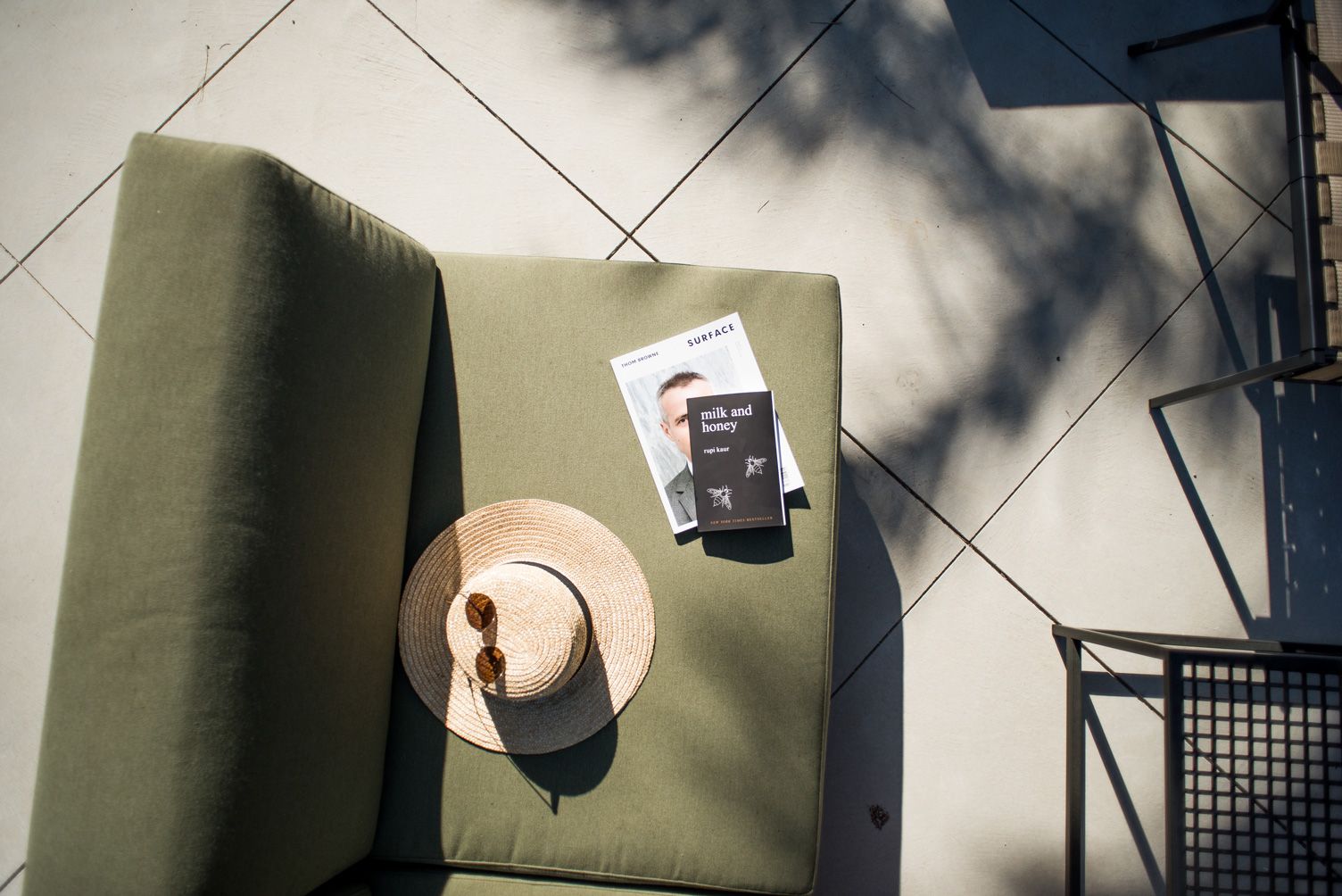
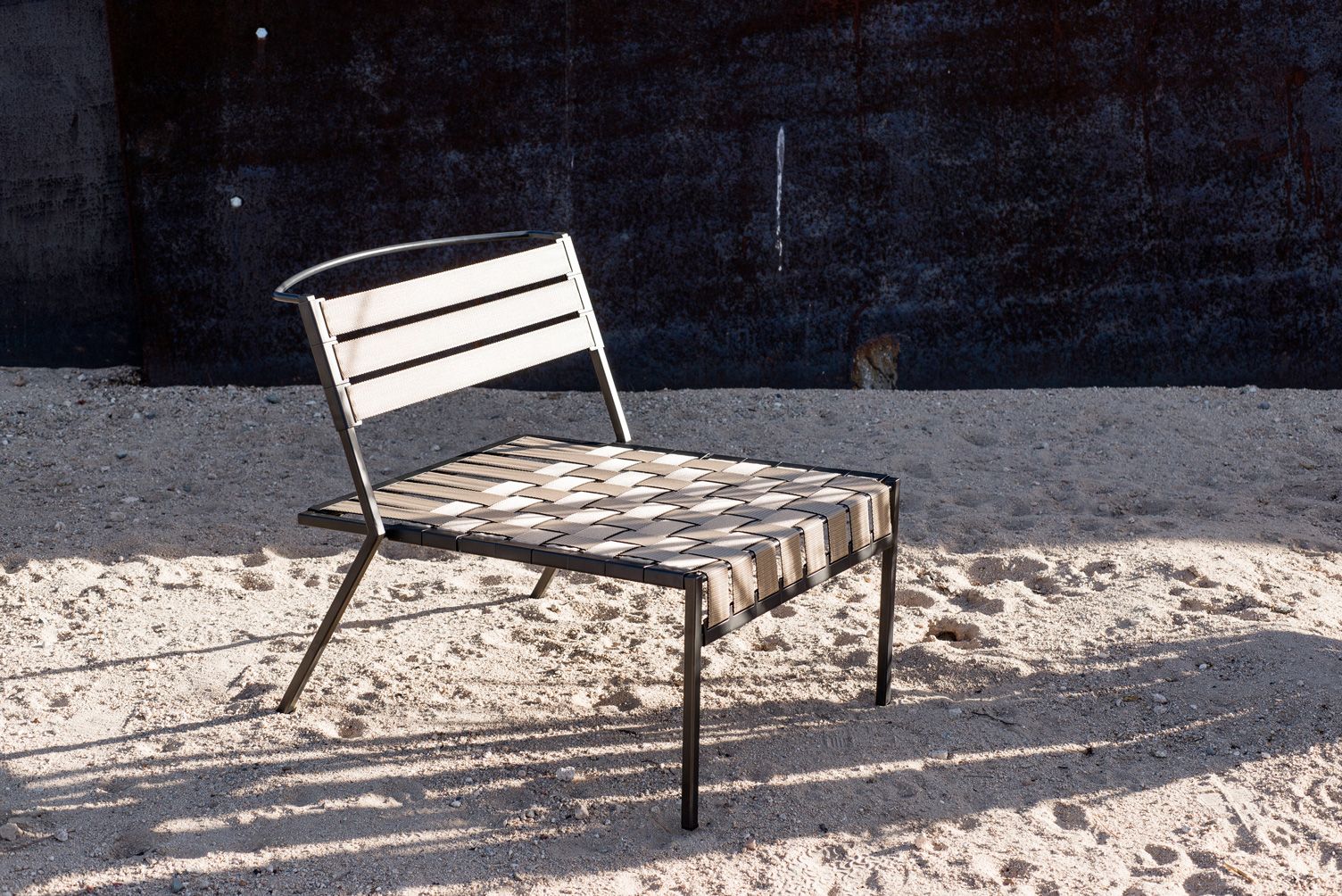


Expanding the Vocabulary: New Objects and Explorations
As the brand matured, Stephen and Beks continued to explore new ideas, new techniques, and new forms. Rather than releasing collections on a fixed schedule, they followed inspiration, allowing individual pieces to emerge when they felt resolved.
This period saw the development of the Reflection Table, a study in balance and clarity; the Spinning Plates Table, a playful and sculptural interpretation of movement; and The Compression Collection, which explored the idea of form shaped under pressure—materials pressed, tensioned, or cinched into refined simplicity.
Each new piece extended the brand’s vocabulary while remaining anchored in core principles: honesty of materials, clear construction, and the ability to customize elements to create a personal connection with the owner.
2023: A New Kind of Inspiration — Welcoming Ellis
In 2023, Stephen and Beks welcomed their son, Ellis—a moment that changed not only their lives but their creative perspective. As parents, they found themselves rethinking scale, proportions, textures, and the ways furniture interacts with playfulness and exploration.
Ellis became a frequent visitor to the studio, crawling between frames, touching fabrics, watching as pieces took shape around him. His presence brought new lightness and curiosity to the environment.
This new lens inspired the upcoming Kids Chair, scheduled for release in 2025. Designed with the same intentionality and structural clarity as the brand’s adult furniture, the Kids Chair introduces softness, approachability, and child-scaled proportions while honoring the visual language the brand has become known for.
It is, in many ways, a love letter—an acknowledgment that the studio is not just a workplace but a family space where ideas grow alongside the people who inhabit it.

2025: The Companion Collection — A Tribute to Obi
In October 2025, Stephen and Beks released The Companion Collection, a line of elegant dog accessories inspired by their beloved pup, Obi.
Obi is not just a pet; he is a member of their small family—a source of joy, comfort, and companionship. When he was diagnosed with a rare autoimmune disorder, Stephen and Beks became intimately familiar with the emotional and financial challenges that accompany specialized veterinary care. Their experience with Obi shaped the philosophy behind the collection.
The Companion Collection is crafted from locally milled nylon webbing, full-grain leather, and solid brass hardware—materials chosen for durability, beauty, and tactile appeal. Each piece reflects the brand’s commitment to local manufacturing and thoughtful construction.
A portion of the profits is donated to The Pet Fund, helping families pay for treatment of rare medical conditions in their animals. In this way, the collection is both functional and philanthropic—a tribute to Obi and a gesture of support to others navigating similar challenges.
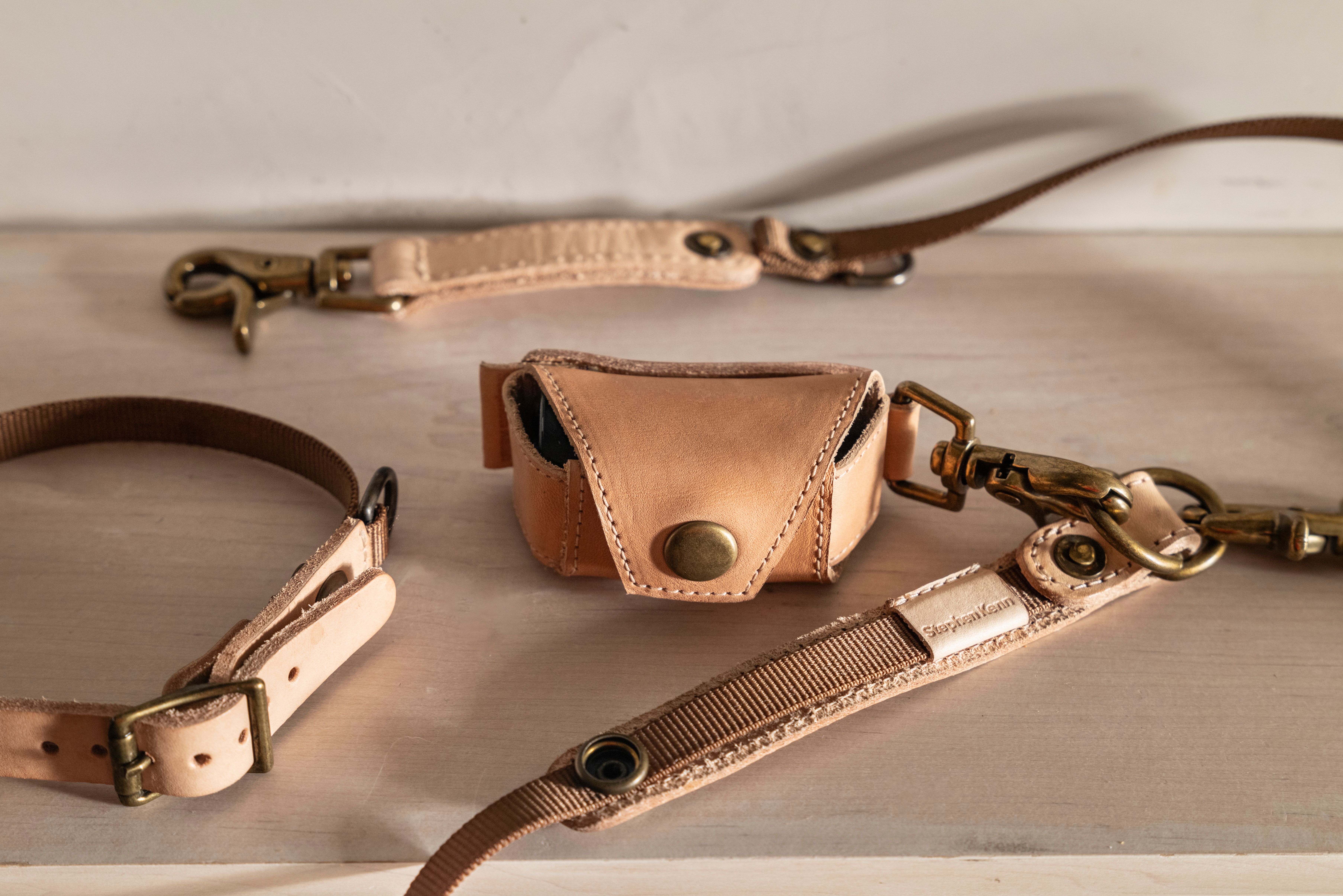
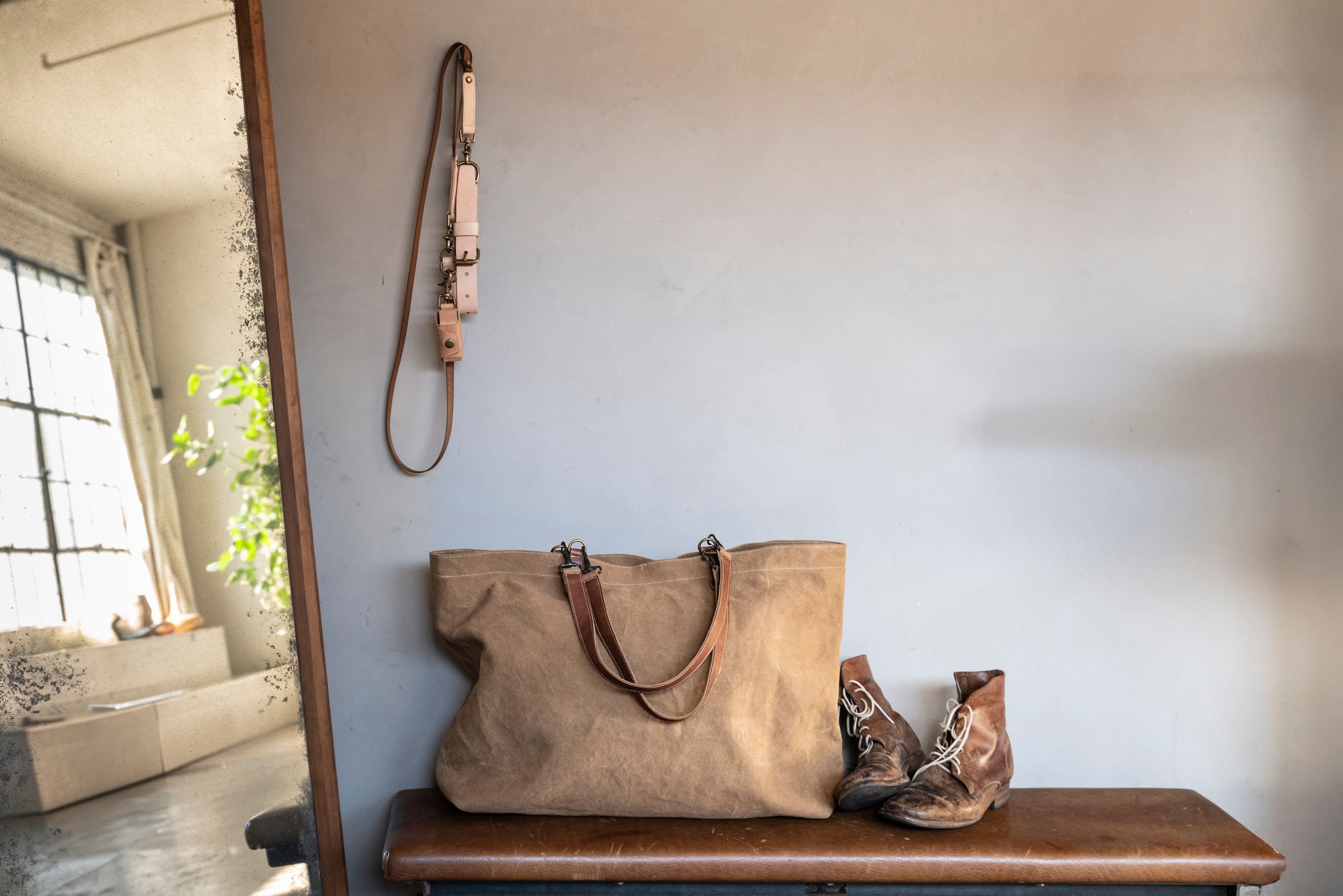
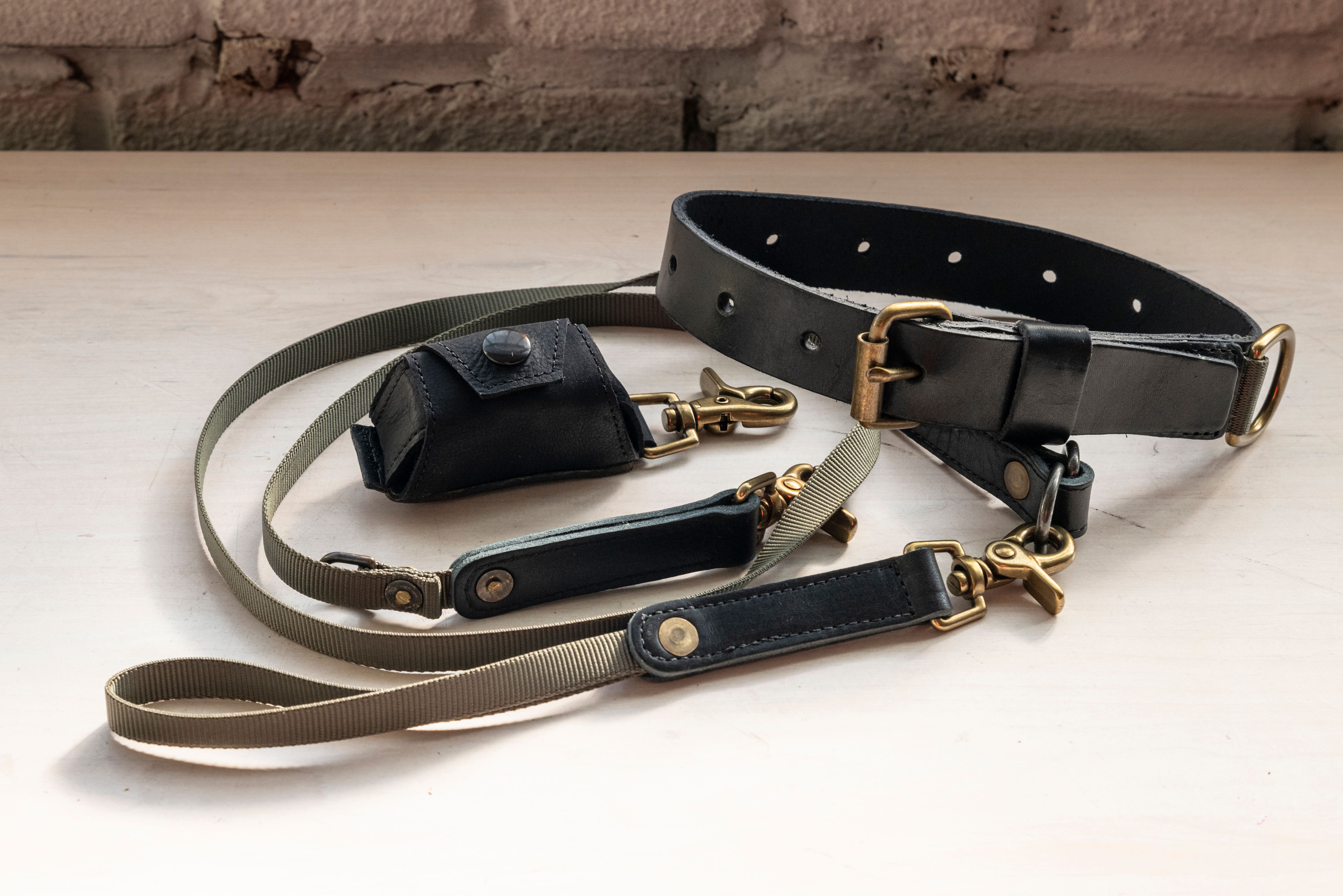
November 2025: The Ease Collection — A New Design Language
The release of The Ease Collection marked a significant evolution in the brand’s aesthetic. Where the Inheritance Collection celebrates exposed structure and layered detail, the Ease Collection embraces softness, simplicity, and rounding. It is warm. It is gentle. It invites comfort.
The collection consists of three core modules—Chair, End Chair, and Corner Chair—which can be arranged to form configurations both intimate and expansive. Customizability remains a hallmark of the brand, but the process is simplified: clients choose their modules and select an upholstery fabric. The rest is intentionally resolved.
The Ease Collection reflects a more mature, distilled expression of the brand—a recognition that simplicity can be as luxurious as complexity.


A Brand Rooted in Humanity
As the years have unfolded, one thing has remained constant: Stephen Kenn is, above all, a human-scale operation. It is not powered by distant factories or sprawling headquarters but by the hands and hearts of a small community in Los Angeles.
Stephen still welds prototypes. Beks still shapes the vision and operations of the studio with clarity and warmth. Their team still builds each piece with attention to detail that no machine can replicate. Many of the craftspeople involved have been with them for years, their expertise woven into the identity of the brand.
Clients sense this humanity. They feel it in the furniture, in the leather, in the webbing, in the weight of a buckle or the curve of a cushion. They feel it in the service, too—in the conversations, the custom projects, the willingness to create something truly meaningful.
At its core, the brand values curiosity, craftsmanship, and connection. It values intentional design over mass production, longevity over trends, transparency over spectacle. It values family—both the family building the brand and the families who bring its pieces into their homes.
An Ongoing Story
The story of Stephen Kenn is far from complete. New ideas continue to emerge, shaped by life, by family, by community, and by the endless fascination Stephen and Beks have with how things are made.
Their work invites people not just to live with objects, but to understand them—to appreciate the structure beneath the surface, the hands behind the craft, the relationships that make each piece possible.
It is a story of inheritance: of skills passed down, of materials transformed, of values carried forward. It is a story of risk and reward, of making thoughtfully and living intentionally.
And it is a story still being written—one handcrafted piece at a time.